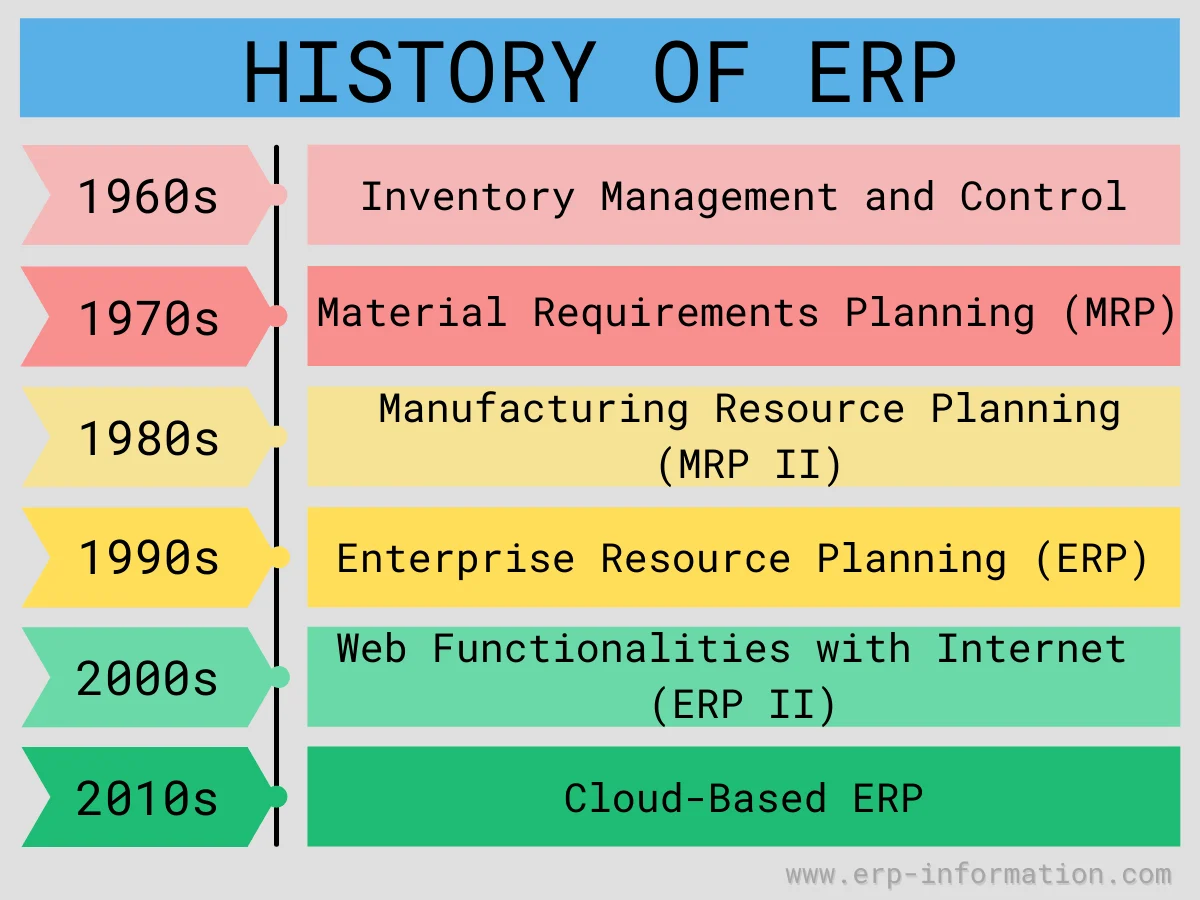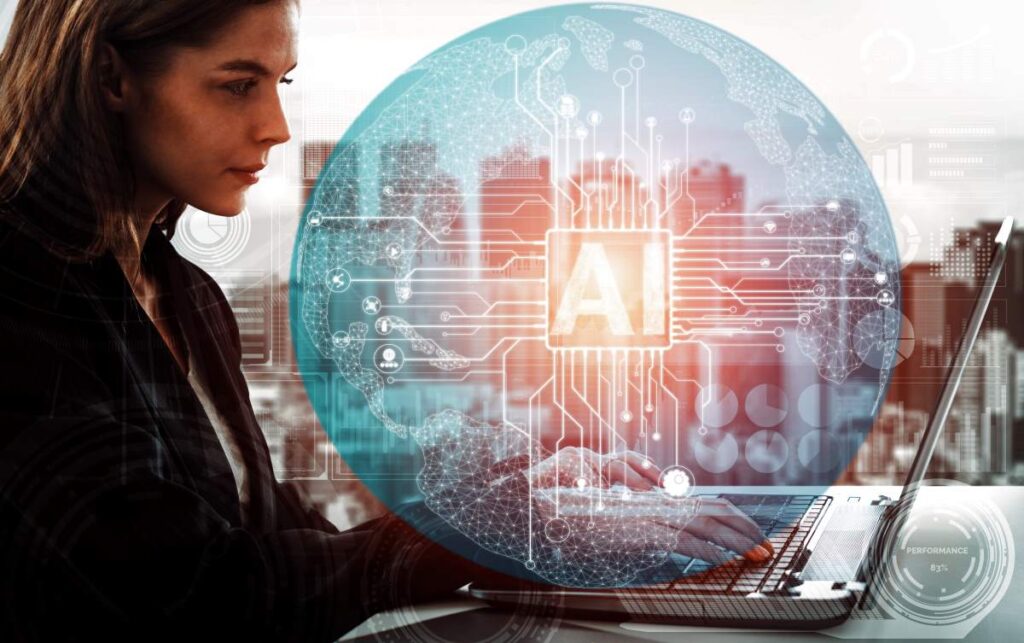The Evolution Of Enterprise Resource Planning (ERP) Software has been a significant trend in the business world over the past few decades. ERP software has evolved from basic accounting and inventory management systems to comprehensive, integrated platforms that streamline business processes and improve efficiency. The integration of various functions such as finance, human resources, and supply chain management has been a key development in ERP software. As technology continues to advance, ERP software is also evolving to incorporate features such as cloud computing, artificial intelligence, and predictive analytics to further enhance its capabilities. The Evolution Of Enterprise Resource Planning (ERP) Software has revolutionized the way businesses operate, providing a centralized solution for managing all aspects of a company’s operations.
One of the key aspects of The Evolution Of Enterprise Resource Planning (ERP) Software is the shift towards cloud-based solutions, allowing for greater flexibility and scalability. Another important development is the focus on user experience, with modern ERP systems designed to be more intuitive and user-friendly. Additionally, the incorporation of advanced analytics and business intelligence tools has enabled companies to make more data-driven decisions and gain valuable insights into their operations. As ERP software continues to evolve, we can expect to see further advancements in areas such as machine learning, IoT integration, and enhanced cybersecurity features to meet the changing needs of businesses in the digital age.
The Origins of ERP Software
Enterprise Resource Planning (ERP) software has its origins in the 1960s and 1970s when businesses started to look for integrated solutions to manage their core business processes. Initially, ERP systems focused on inventory management and control, but over time, they evolved to encompass a wide range of business functions such as finance, human resources, and customer relationship management.
One of the key drivers for the development of ERP software was the need for a centralized system that could streamline operations, improve data accuracy, and provide real-time insights for decision-making. As businesses grew in complexity and scale, the demand for more sophisticated ERP solutions also increased, leading to the modern-day ERP systems that integrate all aspects of a business into a single platform.
The Rise of Integrated Business Solutions
As businesses expanded and diversified, the limitations of standalone software for different functions became apparent. Integrated business solutions emerged as a response to this challenge, with ERP software at the forefront of this evolution. By bringing together various business processes and data into a unified system, ERP software enabled organizations to break down silos, improve collaboration, and gain a holistic view of their operations.
This shift towards integrated solutions also reflected a broader trend in the business world towards digital transformation and automation. ERP software played a pivotal role in helping companies adapt to this new paradigm by providing the tools and capabilities to standardize processes, reduce manual work, and increase efficiency across the board.
The Expansion of Functionalities
Over time, ERP software expanded beyond its initial focus on core business functions to incorporate a wide range of capabilities and modules. This expansion was driven by the growing needs of businesses to manage an increasingly complex array of processes, from supply chain management to e-commerce integration. Modern ERP systems now offer functionalities such as business intelligence, advanced analytics, and even machine learning algorithms to optimize decision-making and forecasting.
Furthermore, the evolution of ERP software has also seen the incorporation of industry-specific features, allowing businesses in different sectors to tailor their ERP systems to their unique requirements. Whether it’s manufacturing, healthcare, or retail, ERP software now offers specialized solutions that address the distinct challenges and opportunities of various industries.
The Shift to Cloud-Based ERP
One of the most significant developments in the evolution of ERP software has been the shift towards cloud-based solutions. Cloud ERP offers several advantages over traditional on-premises systems, including lower upfront costs, scalability, and accessibility from anywhere with an internet connection. This shift has democratized access to ERP software, making it feasible for small and medium-sized enterprises to adopt advanced business management tools.
Cloud-based ERP also enables easier integration with other cloud services and applications, fostering a more connected and agile business environment. With the increasing prevalence of remote work and distributed teams, the flexibility and mobility offered by cloud ERP have become essential for modern businesses looking to stay competitive.
The Embrace of Mobility and User Experience
Another notable trend in the evolution of ERP software is the emphasis on mobility and user experience. Early ERP systems were often criticized for their complexity and clunky interfaces, but modern ERP solutions have prioritized intuitive design and accessibility. Mobile ERP apps have become increasingly common, allowing users to access key functionalities on the go and fostering greater productivity and responsiveness.
Moreover, user experience design has become a focal point for ERP vendors, with a focus on personalization, visualization, and ease of use. This shift reflects a broader trend in the software industry towards putting the user at the center of product development, recognizing that a seamless and enjoyable user experience is crucial for driving adoption and maximizing the value of ERP software.
The Integration of AI and Automation
Artificial Intelligence (AI) and automation have been integrated into modern ERP software to enhance efficiency, decision-making, and predictive capabilities. AI-powered analytics can sift through large volumes of data to identify patterns, trends, and anomalies, providing valuable insights for strategic planning and operational optimization. Automation capabilities, such as robotic process automation (RPA), have also been embedded into ERP systems to streamline repetitive tasks and free up human resources for more value-added activities.
This integration of AI and automation represents a significant leap forward in the capabilities of ERP software, empowering businesses to work smarter, not harder. By leveraging machine learning and automation, ERP systems can adapt to changing conditions, anticipate future needs, and proactively support decision-making at all levels of the organization.
The Impact of Industry 4.0 and IoT
The advent of Industry 4.0, characterized by the integration of digital technologies into industrial processes, has had a profound impact on the evolution of ERP software. The Internet of Things (IoT) has enabled the collection of vast amounts of real-time data from connected devices, machines, and sensors, providing a wealth of information that can be leveraged by ERP systems for improved visibility, predictive maintenance, and agile decision-making.
ERP software has evolved to incorporate IoT data streams, enabling businesses to monitor and manage their assets, production lines, and supply chains with unprecedented granularity. This integration of Industry 4.0 technologies with ERP has paved the way for smart manufacturing, efficient logistics, and responsive operations that can adapt in real time to changes in the market or the production environment.
The Importance of Data Security and Compliance
As ERP systems have become central to the operations of businesses, the importance of data security and compliance has come to the forefront. With the increasing frequency and sophistication of cyber threats, ERP software has had to evolve to incorporate robust security features, encryption protocols, and access controls to protect sensitive business data from unauthorized access or breaches.
Moreover, the growing emphasis on data privacy and regulatory compliance, such as the GDPR in Europe or the CCPA in the United States, has prompted ERP vendors to build in tools and functionalities that facilitate adherence to these standards. This focus on data security and compliance ensures that ERP software not only supports business operations but also safeguards the integrity and confidentiality of critical information.
The Role of ERP in Digital Transformation
ERP software has emerged as a linchpin in the broader process of digital transformation for businesses across industries. By providing a unified platform for managing core processes, data, and resources, ERP systems form the backbone of digital initiatives aimed at optimizing operations, enhancing customer experiences, and driving innovation. Whether it’s integrating with e-commerce platforms, enabling omnichannel strategies, or leveraging advanced analytics, ERP software is at the forefront of enabling businesses to adapt to the digital age.
Furthermore, ERP systems play a crucial role in breaking down organizational silos and fostering a culture of collaboration and transparency, which are essential elements of successful digital transformation. By connecting disparate parts of the business and providing a single source of truth, ERP software empowers companies to embark on their digital journey with confidence and agility.
The Future of ERP Software
Looking ahead, the evolution of ERP software is likely to continue in response to ongoing technological advancements, changing business needs, and shifting market dynamics. We can expect to see further integration of emerging technologies such as blockchain, augmented reality, and edge computing into ERP systems, opening up new possibilities for efficiency, security, and innovation.
Moreover, as businesses strive to become more agile and responsive, ERP software will likely evolve to offer greater flexibility, modularity, and customization options. The era of one-size-fits-all ERP solutions may give way to more tailored and adaptable systems that can meet the diverse and evolving needs of modern businesses. Overall, the future of ERP software promises to be dynamic and transformative, shaping the way organizations operate and compete in the digital economy.
| Decade | ERP Software | Features |
|---|---|---|
| 1960s | Material Requirements Planning (MRP) | Inventory management, production planning |
| 1980s | Manufacturing Resource Planning (MRP II) | Expanded to include finance, human resources |
| 1990s | Enterprise Resource Planning (ERP) | Integrated all core business processes |
| 2000s | ERP II | Extended to include external partners, customers |
| 2010s | Cloud-based ERP | Accessible from anywhere, scalable |
The Evolution Of Enterprise Resource Planning (ERP) Software can be traced from the 1960s with the introduction of Material Requirements Planning (MRP) systems, which focused on inventory management and production planning. This evolved into Manufacturing Resource Planning (MRP II) in the 1980s, incorporating finance and human resources. The 1990s saw the emergence of Enterprise Resource Planning (ERP) systems, which integrated all core business processes. In the 2000s, ERP II extended this integration to include external partners and customers. The 2010s brought about the era of cloud-based ERP systems, which are accessible from anywhere and scalable to meet the needs of modern businesses.



